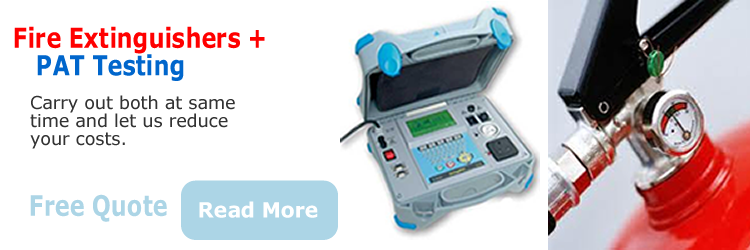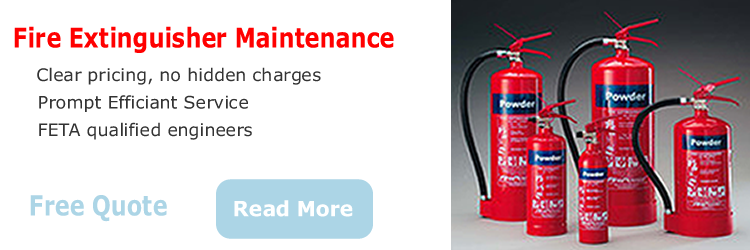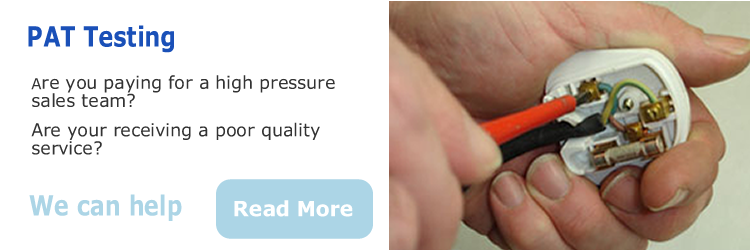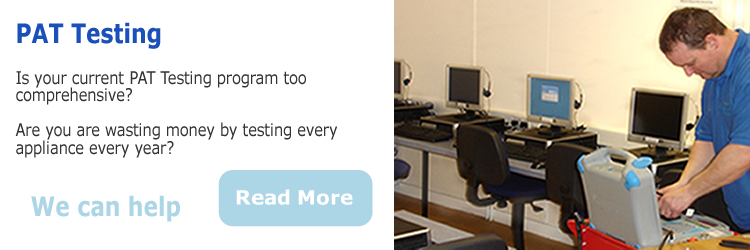
Info@proactivepattesting.co.uk
Leeds Bradford wakefield Huddersfield Halifax York Harrogate Castleford Pontefract Doncaster Sheffield



What is a User Check?
To answer this question I would first recomend you download the HSE guide entitled Maintaining portable electrical equipment HSG 107 From This link. Referance will be made here to the relavant paragraphs.
A User Check is to be carried out by the person most familiar with the equipment. This is the most frequent check to be carried out. (See Column 3 on Testing Frequency Chart) (see HSG 107 paragraph 38 & 39)
A User Check is a simple external visual inspection of the appliance’s Plug and Case. Looking in particular for cracks to appliance case and plug, damage to the cable, as well as signs of overheating of the appliance, plug and wall socket. The flex should be examined along its length for damage, and perticularly for electrical tape covering damage to the cables outer sheath. A check should be made to ensure that the appliance switch functions properly.
Any faults are to be reported to the responsible person, who should asses the appliance and if necessary the appliance should be removed from use. A User check is carried out on an informal basis and the results are not recorded.
What is a Formal Visual Inspection?
A Formal Visual Inspection should only be carried out by a competent and suitably trained person. The whole process should be recorded. (See HSG 107 paragraphs 40 to 46)
A formal Visual Inspection is to be carried out more frequently than a Combined Inspection and Test (PAT Test) (See columns 4 & 6 of the Testing Frequency chart) This is the most important part of the whole inspection and testing process, as most of the dangerous faults are uncovered during the visual inspection.
The first part of the inspection is the same as the User Check, However a more detailed look at the appliance is required. An assessment is made as to the suitability of the equipment for the intended task. Where possible, the plug needs to be opened to ensure it is wired correctly The terminals and cable grip are tight. The fuse is correct. The wires do not have excess bare copper wire exposed. And there are no signs of damage or overheating within the plug. Careful note should be taken as to the ability to quickly isolate the appliance form the electrical supply.
What is a Combined Inspection and Test?
A combined inspection and Test is, as the name suggests, a combination of a Formal Visual Inspection with The electrical tests carried out with a PAT Testing machine. (See columns 5 & 7 on the Testing Frequency Chart)
The level of competence required is much greater than for just a Formal Visual Inspection. A greater understanding of the principles of Earthing and Insulation are required, As well as a clear grasp of the risks posed by faulty electrical equipment. It is vital to have an accurate understanding of how different electrical appliances are constructed so as to apply the correct electrical tests. The application of incorrect electrical Tests can damage some delicate equipment. The industry recognised standard of training is the City and Guilds 2377 qualification.
The electrical tests that PAT Testing machines apply to electrical equipment are based on assessing to level of Earthing and Insulation of the appliance. There are a number of different ways this can be tested depending on the type of equipment and its construction.
Why is this important?
Sadly very few company duty Holders understand how these three types of inspection and test procedure are formed into a structured maintenance plan. Most do not understand the difference between a User Check and a Formal Visual Inspection. In fact many have never even heard of a Formal Visual Inspection
Most companies do not carry out separate Formal Visual Inspections, but they rely on the Combined Inspection and Test (PAT Test) to carry out this most important part of the whole process for them. This is an appropriate strategy providing they take into account the greater frequency required for Visual Inspections when deciding on the frequency of their Combined Inspection and Testing program. (PAT Testing)
If you click back to the Testing Frequency Chart and look, for example, at row 6 Schools. If you compare the frequency of visual inspections for class 1 appliances in column 4, with the frequency of Combined Inspection and Test (PAT Test) in column 5. You will notice that the recommendation is to carry out Visual Inspections every 6 months. (Once separately, once combined with the PAT Test.) The difference for class 2 equipment in columns 6 & 7 is even more marked.
If your company does not have a separate Formal Visual Inspection program, it is vital that you take this into account when making decisions on the frequency of your PAT Testing program.
To answer this question I would first recomend you download the HSE guide entitled Maintaining portable electrical equipment HSG 107 From This link. Referance will be made here to the relavant paragraphs.
A User Check is to be carried out by the person most familiar with the equipment. This is the most frequent check to be carried out. (See Column 3 on Testing Frequency Chart) (see HSG 107 paragraph 38 & 39)
A User Check is a simple external visual inspection of the appliance’s Plug and Case. Looking in particular for cracks to appliance case and plug, damage to the cable, as well as signs of overheating of the appliance, plug and wall socket. The flex should be examined along its length for damage, and perticularly for electrical tape covering damage to the cables outer sheath. A check should be made to ensure that the appliance switch functions properly.
Any faults are to be reported to the responsible person, who should asses the appliance and if necessary the appliance should be removed from use. A User check is carried out on an informal basis and the results are not recorded.
What is a Formal Visual Inspection?
A Formal Visual Inspection should only be carried out by a competent and suitably trained person. The whole process should be recorded. (See HSG 107 paragraphs 40 to 46)
A formal Visual Inspection is to be carried out more frequently than a Combined Inspection and Test (PAT Test) (See columns 4 & 6 of the Testing Frequency chart) This is the most important part of the whole inspection and testing process, as most of the dangerous faults are uncovered during the visual inspection.
The first part of the inspection is the same as the User Check, However a more detailed look at the appliance is required. An assessment is made as to the suitability of the equipment for the intended task. Where possible, the plug needs to be opened to ensure it is wired correctly The terminals and cable grip are tight. The fuse is correct. The wires do not have excess bare copper wire exposed. And there are no signs of damage or overheating within the plug. Careful note should be taken as to the ability to quickly isolate the appliance form the electrical supply.
What is a Combined Inspection and Test?
A combined inspection and Test is, as the name suggests, a combination of a Formal Visual Inspection with The electrical tests carried out with a PAT Testing machine. (See columns 5 & 7 on the Testing Frequency Chart)
The level of competence required is much greater than for just a Formal Visual Inspection. A greater understanding of the principles of Earthing and Insulation are required, As well as a clear grasp of the risks posed by faulty electrical equipment. It is vital to have an accurate understanding of how different electrical appliances are constructed so as to apply the correct electrical tests. The application of incorrect electrical Tests can damage some delicate equipment. The industry recognised standard of training is the City and Guilds 2377 qualification.
The electrical tests that PAT Testing machines apply to electrical equipment are based on assessing to level of Earthing and Insulation of the appliance. There are a number of different ways this can be tested depending on the type of equipment and its construction.
Why is this important?
Sadly very few company duty Holders understand how these three types of inspection and test procedure are formed into a structured maintenance plan. Most do not understand the difference between a User Check and a Formal Visual Inspection. In fact many have never even heard of a Formal Visual Inspection
Most companies do not carry out separate Formal Visual Inspections, but they rely on the Combined Inspection and Test (PAT Test) to carry out this most important part of the whole process for them. This is an appropriate strategy providing they take into account the greater frequency required for Visual Inspections when deciding on the frequency of their Combined Inspection and Testing program. (PAT Testing)
If you click back to the Testing Frequency Chart and look, for example, at row 6 Schools. If you compare the frequency of visual inspections for class 1 appliances in column 4, with the frequency of Combined Inspection and Test (PAT Test) in column 5. You will notice that the recommendation is to carry out Visual Inspections every 6 months. (Once separately, once combined with the PAT Test.) The difference for class 2 equipment in columns 6 & 7 is even more marked.
If your company does not have a separate Formal Visual Inspection program, it is vital that you take this into account when making decisions on the frequency of your PAT Testing program.
Home
Fire Services
Electrical Testing
Services
PAT Testing
Why PAT Test?
What needs Testing?
Testing Frequency
Reduce Your
PAT Testing
Area Coverage
Contact
Fire Services
Electrical Testing
Services
PAT Testing
Why PAT Test?
What needs Testing?
Testing Frequency
Reduce Your
PAT Testing
Area Coverage
Contact
Safety Services
|
PAT Testing
|
Fire Alarm Testing
|
Fire Extinguisher Maintenance
|
|
Periodic Testing
|
Emergancy Lighting Testing
|
Fire Risk Assesments
|
|
Fire Equipment Sales
|
Safety Signage
|
Fire Marshal Training
|

Leeds
0113
238 5083

Leeds
PAT Testing






